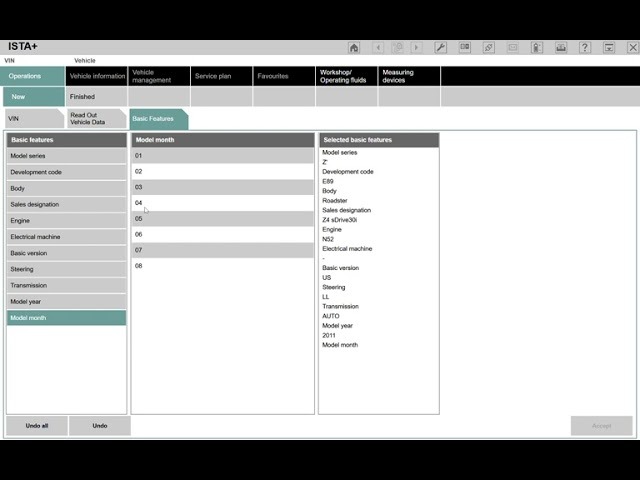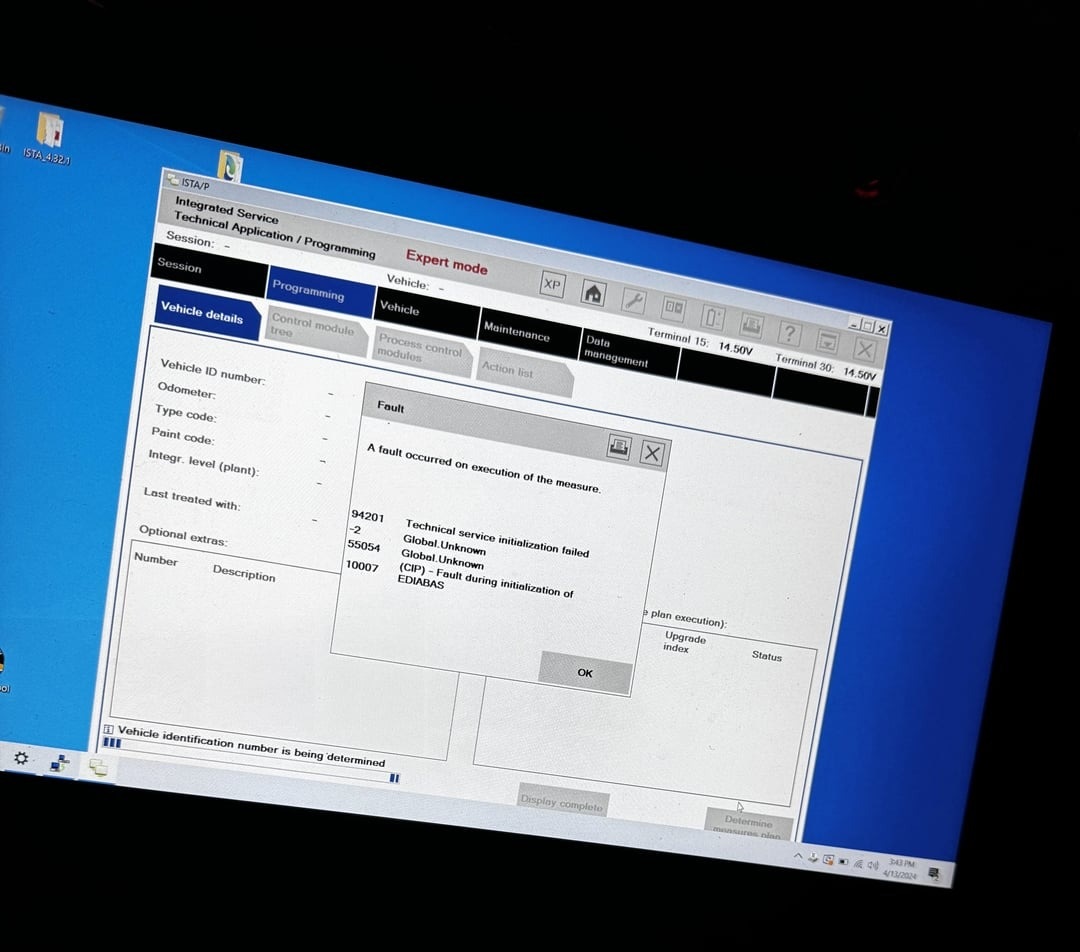How To Reset BMW Fault Codes with ISTA D?
Wondering how to reset BMW fault codes with ISTA D? BMW’s advanced diagnostic systems store fault codes to help identify vehicle issues, but clearing them after repairs is crucial to ensure smooth operation. With ISTA D – the official BMW diagnostic software – you can accurately read, diagnose, and reset fault codes like a professional. In this guide, VCCarTool will walk you through every step to clear fault memory on your BMW using ISTA D, helping you eliminate warning lights and restore system functionality with confidence.

Why Reset BMW Fault Codes?
Resetting BMW fault codes is a critical step after diagnosing and repairing any issue in the vehicle’s system. Here’s why:
- Clear Warning Lights: After a fault is resolved, the dashboard may still display warning lights unless the code is reset. Clearing the code ensures the driver isn’t misled by outdated alerts.
- Verify Successful Repairs: By resetting the fault memory and monitoring if the code reappears, technicians can confirm whether the issue has been properly fixed or if further diagnosis is needed.
- Restore Normal Functionality: Some fault codes may cause certain vehicle functions to become limited or disabled (e.g., limp mode, traction control, or start/stop system). Resetting them restores full functionality.
- Prevent False Diagnostics: Keeping old fault codes in memory can interfere with future diagnostics. Clearing outdated codes helps maintain accurate data for future service sessions.
- Improve Vehicle Performance: Many modern BMW systems adjust performance based on fault conditions. Resetting fault codes helps the car return to optimal operating conditions.
Using ISTA D is the most reliable way to reset BMW fault codes safely and ensure that the onboard systems are up to date and running without issues.

How To Reset BMW Fault Codes with ISTA D – Step-by-Step Guide
Resetting fault codes in your BMW using ISTA D (Integrated Service Technical Application – Diagnostics) is a straightforward process when you follow the right steps. Here’s how to do it:
Step 1: Prepare Your Equipment
To get started, you’ll need:
- A laptop with ISTA D installed
- A compatible BMW diagnostic interface (e.g., ICOM, ENET, or K+DCAN cable depending on the model)
- A stable power supply (recommended during diagnostics)
Step 2: Connect Your BMW to ISTA D
- Plug the diagnostic cable into your BMW’s OBD-II port.
- Connect the other end to your laptop.
- Open ISTA D software.
- Turn the vehicle ignition to ON (do not start the engine).
Step 3: Identify the Vehicle
On ISTA D, click “Operations” > “Read Out Vehicle Data”.
Select “Complete Identification” to automatically detect your VIN and modules.
Step 4: Perform Vehicle Test
Once identified, ISTA will perform a full system scan.
Wait for the results to show a list of fault codes (DTCs) stored in various ECUs.
Step 5: Reset or Clear Fault Codes
- Click “Fault Memory” in the top menu.
- Review all stored fault codes.
- Select “Delete Fault Memory”.
- Confirm when prompted – ISTA will begin clearing the codes.
Step 6: Final Checks
- Turn off the ignition, wait a few seconds, and turn it back on.
- Re-run a vehicle test to ensure no active faults remain.
- If the same code returns, further diagnosis may be required.
Pro Tip: Make sure all repairs are complete before clearing codes. Resetting without fixing the root cause may result in the code reappearing instantly.
Important Notes When Resetting BMW Fault Codes with ISTA D
Before you proceed to clear fault codes using ISTA D, here are key considerations to ensure safety, effectiveness, and proper diagnostics:
1. Always Diagnose Before Resetting
ISTA D shows detailed information about each fault, including possible causes and affected components. Review these carefully and avoid clearing codes before identifying the root cause. Some faults indicate deeper mechanical or electrical issues.
2. Do Not Reset While Driving or During Engine Operation
Always perform diagnostics and fault resets while the vehicle is stationary and in ignition ON (but engine OFF) mode. Resetting during engine operation may cause system errors or ECU miscommunication.
3. Maintain Stable Power Supply
Low battery voltage during diagnosis or resets can lead to communication errors or incomplete resets. Use a battery charger or stabilizer if needed.
4. Persistent Faults Will Return
If a fault code keeps reappearing after reset, it’s an active fault — not just a stored one. Resetting won’t resolve the issue until the underlying problem is repaired, whether it’s a faulty sensor, damaged wiring, or failed component.
5. Coding-Related Faults Should Be Handled Cautiously
Some modules log errors after coding or module replacement. Reset only after successful coding/programming with ISTA/P or E-Sys if applicable.
6. Back Up Vehicle Data When Possible
ISTA allows you to store session history. Saving pre-reset fault codes helps you track issues if they return later and supports documentation of repairs.
If you’re unsure whether to clear a code or how to interpret fault data, contact VCCarTool for remote diagnostic assistance. We provide professional support for BMW coding, fault tracing, and system setup.
Resetting BMW fault codes with ISTA D is a powerful tool for technicians and enthusiasts alike, but it should always be done with care. While clearing stored errors can help restore full functionality to your BMW’s systems, it’s crucial to diagnose and resolve the root cause of each fault to prevent further issues.
Whether you’re troubleshooting persistent warning lights or performing post-repair verification, using ISTA D correctly ensures accurate results and protects your vehicle’s complex electronics. If you need professional guidance or remote support, VCCarTool is here to assist with expert ISTA installation, setup, and diagnostics. Contact us via WhatsApp +1 (901) 414-1927 for support detail and quicly!
